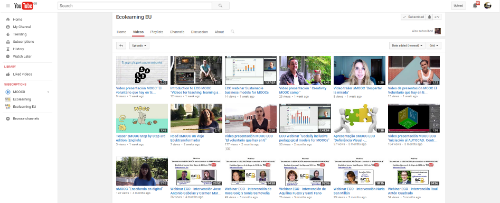
MOOCs can distribute content in a scalable and high-quality format to a large number of learners around the world. This MOOC is available to learners who want to teach or communicate via the medium of video and the art of video production.
This article forms integral part of the on line MOOC course Videos for teaching, learning and communication, created by The University of Manchester.
Considering that video is the main method of content delivery in MOOCs, we are going to provide you an overview of video production styles. So you will have more information about what video style to choose for recording your own MOOC.
A video production style is the main method of visual organization that is employed to realize a video’s goals and achieve specific results when the video is viewed.
When thinking about video for learning, the choice of video production style will have a great impact on a video’s ability to effect pedagogical objectives and desired learning outcomes.
When choosing a production style, it is important to keep in mind the video’s goals and desired results. Different production styles have different affordances, so it is vital that the selection process be both: thoughtful and intentional.
The main production styles that are currently being used in on-line learning context are:
Talking Head:
- Common style typically shot in a studio.
- Can be used to build a connection between the person on-camera and the viewer.
- Multiple camera angles may be used for easier editing and to break the monotony.
Presentation Slides with Voice-Over:
- Could be PowerPoint or any other presentation format, with voice-over and slides visible full screen.
- Annotations on a slide can be used to highlight information or draw the viewer’s attention to a specific detail.
Picture-in-Picture:
- Ability to show slides and instructor at the same time.
Text Overlay:
- Text or graphics overlaid onto a video.
- Can be used to summarize main points, highlight keywords, and phrases, or visualize what is being discussed.
Khan-Style Tablet Capture:
- ‘Chalk and talk’ style made on a tablet.
- Relatively cheap and easy to produce.
- Presenter typically uses a conversational tone.
Udacity-Style Tablet Capture:
- Voice overlay over digital whiteboard / writing hand.
- Presenter’s hand captures using an overhead camera, but made semi-transparent in post –production, so writing is not obscured.
Actual Paper / Whiteboard:
- A low-tech alternative to digital tablet capture.
- Could be an upright whiteboard, or an overhead shot of a piece of paper on a desk.
Screencast:
- Recording whatever is on the instructor’s screen and adding an audio voice-over.
- Very versatile, can be used for any on-screen content.
- Commonly used for technical training, software training, and step-by-step video tutorials.
- Relatively cheap to produce.
Animation:
- Useful to visualize abstract concepts and relations.
- Can range from very simple to highly sophisticated.
Classroom Lecture:
- Filming a traditional lecture in a classroom.
Recorded Seminar:
- Recording a seminar discussion, often with the professor and current or the past students of the course.
- Can be useful to give viewers the feeling that they are in class together with other learners.
Interview:
- A good way to involve outside experts from a particular field.
- Gives viewers access to a leading expert’s opinions and ideas about a relevant topic.
Conversation:
- An informal conversation about a particular topic, typically featuring the instructor(s) and perhaps a guest.
- Typically unscripted, authentic conversations, which may help build a connection between the presenters and the viewer.
- Can be used as a method for reflecting on discussions and happenings within the course.
Live Video:
- Live virtual office hours can help instructors establish a presence in the course.
- Hangouts-on-Air can also be useful to bring in external experts.
- Gives students a chance to get their questions answered live.
Web Cam Capture:
- Relatively cheap to produce, web cams are easily accessible.
- Similar to a talking head style video, but more informal and not shot in a studio.
Demonstration:
- Allows viewers to see a concept, process in action, rather than just seeing someone talking about it.
- Can give viewers special access to art, tools, etc.
- Very useful for showing experiments that viewer would not otherwise be able to see or do on their own.
On-Location:
- A great way to take viewers to places that they might otherwise not be able to go or see things from a new perspective.
- An uncontrolled environment makes this format more risky to film
Green Screen:
- A green screen can be used to substitute different
- Requires proper equipment, lighting and post production.
Two video production styles that are featured prominently in many MOOCs: the talking head style, where the instructor is recorded lecturing into the camera, and the tablet capture with voice-over style.
It is, of course, possible to combine two or more of them in one video, thereby achieving different results than could be produced with any of these formats on its own.
One common combination is often referred to as a ‘bookend’ approach, which usually features the talking head style at the beginning and the end of the video, with a tablet capture or screen cast used in between.
So, have you thought about what video production style to choose for your next MOOC?
Following the idea of being ‘Massive’, why not share it on your Social Media sites, with your friends, and see if they might like to join them on this course.
For an introvideo to the course, please watch the below:
We look forward to seeing you there! – Team UoMan.
Note: Article idea and some texts are taken from: Hansch, A., McConachie, K., Hillers, L. and Prof. Dr. Schildhauer,T. (2015). TopMOOC Research Project. ‘The Role of Video in Online Learning: Findings From the Field and Critical Reflections‘.


